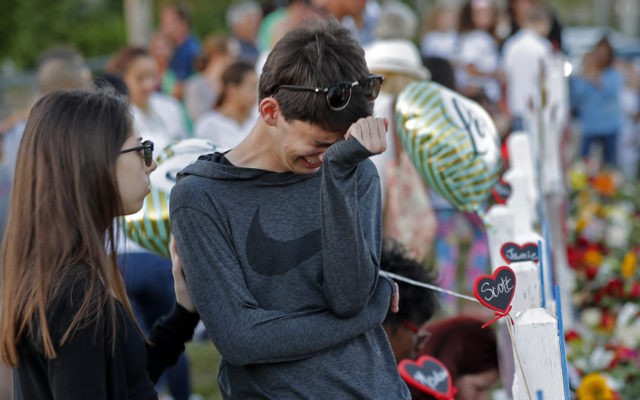The horrific February 14 school shooting in Parkland, Florida, has triggered the usual progressive drivel among Democrat politicians arguing for gun control. It did not take Connecticut Senator Chris Murphy long to reach the Senate floor.
But we must face it: Banning any particular category of firearms would not have done a thing to stop a determined, mentally-unstable school shooter like Nikolas Cruz. He was so determined, in fact, that he stated his intention to be a “professional school shooter” on YouTube.
And while we would hope that agents at the FBI would have the intellectual rigor to put two and two together, or at least respond to a tip dropped squarely in their laps, there will always be the possibility they will fail. And while we would also hope that after responding to twenty calls involving the perpetrator over multiple years, local law enforcement would be able to do something, that is not always guaranteed either. Relying on government agencies to stop a shooter in advance is a dangerous approach. We should encourage law enforcement to try and prevent these incidents from occurring, but we would be foolish to think that that approach will always succeed.
When the government fails, as it so often does, the last line of defense is regular people with courage. At that point, the only thing that stops a bad guy with a gun is a good guy with a gun.
There was one person who displayed extraordinary courage at the Florida high school. Football coach Aaron Feis gave his life trying to shield students from the barrage of bullets. But imagine how much more effective coach Feis could have been in protecting the lives of students if he had been armed.
The time has come for schools to allow willing teachers, coaches, and staff to be armed, provided they obtain a concealed carry permit and take appropriate training.
The school resource officers who are present at some schools are not enough. The critical question in every scenario is, how long will it take for an armed defender to arrive at the scene? The answer to this question is a matter of life and death. If there are multiple armed teachers and staff in a school, then the response time can be reduced to seconds, rather than minutes.
This is not a new idea. Indeed, laws in 18 states already permit teachers and/or staff to be armed in some circumstances, usually on terms that require the approval of the school board or superintendent. They are Alabama, California, Connecticut, Hawaii, Idaho, Iowa, Kentucky, Massachusetts, Mississippi, Montana, New Hampshire, New Jersey, New York, Oregon, Rhode Island, Texas, Utah, and Wyoming.
The other 32 States should amend their laws to allow willing teachers and staff to be armed. And those States that already permit teachers to carry need to revisit their laws to ensure that it is not too difficult for teachers who want approval to receive it. That’s what Alabama is doing. It should also be noted that in none of these states have there been any accidents or other negative consequences resulting from the policy of allowing teachers and staff to be armed.
The Florida Legislature is now considering a bill to join this list of States. If only Florida had taken this step earlier.
Coach Feis demonstrated heroically that there are school personnel who are willing to take action to protect themselves and others. It is time to let them do so with firearms.
Kris W. Kobach is the elected secretary of state of Kansas and a guest columnist for “Down Range with AWR Hawkins.”

COMMENTS
Please let us know if you're having issues with commenting.